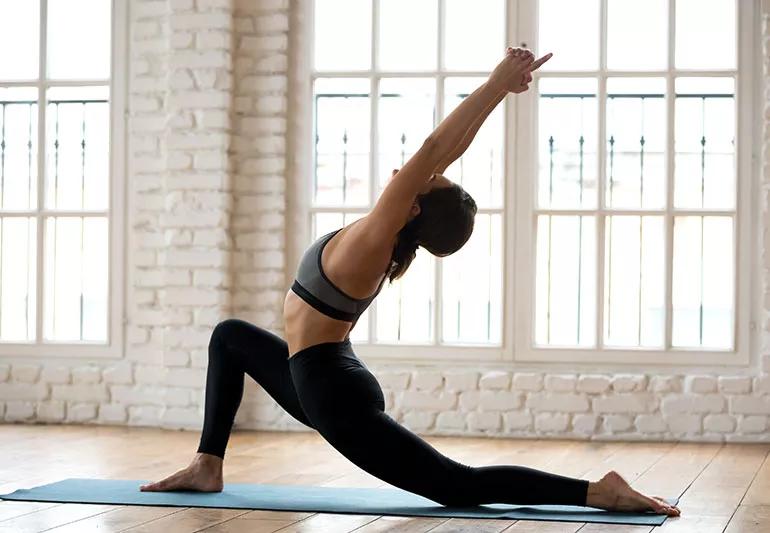Understanding the pros + cons

Most people understand the basic health benefits of yoga: flexibility, stress relief and muscle strength, just to name a few. But why is it different when you turn up the heat? Is the increase in degrees a gimmick or is it actually beneficial to your health?
Advertisement
Cleveland Clinic is a non-profit academic medical center. Advertising on our site helps support our mission. We do not endorse non-Cleveland Clinic products or services. Policy
Hot yoga is exactly what it sounds like — yoga practiced in a hot environment. Most hot yoga classes have an increased room temperature set anywhere between 90 and 105 degrees Fahrenheit. That’s quite a difference compared to normal room temperature (68 to 72 degrees Fahrenheit). Why so hot? The heat helps lubricate tendons and ligaments, making it easier to fold into certain stretches and poses. “The heat allows participants to get a deeper stretch because their body is warmer and they can move into the poses a little deeper,” says yoga instructor Jennifer Sauer.
The potential pros of hot yoga are:
On the flip side, it can also be easy to overdo it in a hot yoga class. Because of the high temperature in the room, you might not realize how hard you’re working and you could end up taking stretches too far before your body is ready.
The potential cons of hot yoga are:
Hot yoga should be something that you ease into. So taking some regular yoga classes first and getting an idea of your current flexibility level is recommended. Beginner yoga classes also help build on your knowledge of the poses and sequences.
“While people have reported pain relief, detoxification and weight loss from hot yoga, scientific research is limited,” Sauer says. “It’s safe to say that hot yoga is more vigorous than traditional practices,” she notes, “but the jury is still out on overall calorie burn and weight loss.”
Advertisement
When you combine hotter temperatures with extra exertion, your body is working harder and therefore increasing your heart rate. So, ultimately, you are burning a good amount of calories during your hot yoga session — the data just doesn’t exist yet for hot yoga specifically.
Like other types of exercise, hot yoga isn’t for everyone. Hot yoga is not suggested for those who are pregnant or have a heart condition. The heat can also aggravate asthma.
Sauer recommends looking out for side effects such as dizziness, lightheadedness and not being able to take a deep breath in. “If that happens, return to a stable position or leave the studio until you feel better,” she says. “It’s important to stay hydrated and listen to your body.”
When it comes to hot yoga — try attending a few basic or beginner yoga classes first. Then when you feel comfortable, try incorporating a heated class.
Here’s how to find the best yoga class for you.
“There are different styles of yoga, so if you try a class that doesn’t appeal to you, try another type of yoga or a different instructor,” Sauer says. “The heat isn’t for everyone — and that’s perfectly OK!”
Advertisement
Learn more about our editorial process.
Advertisement

This gentle yoga stretch supports your spine, strengthens your core and calms your mind

Focus on inhaling and exhaling through 12 steps of a complete sequence

Stand tall and feel grounded with this foundational yoga pose

This transitional and restorative yoga pose provides a full-body stretch

Somatic yoga focuses on the sensation and experience of movement — not striking perfect poses

Balasana, or child’s pose, is a restorative full-body yoga technique

Kids’ yoga can help kiddos become more aware of their physical, mental and emotional selves

This mindful practice is designed to give you mental and physical relaxation

The best parenting style balances enforcing rules and showing plenty of love

Tips include cutting back on sugar, focusing on exercise and managing stress

It can be harder to let go when you’ve invested time, energy and emotions — but it might be the healthier choice long term